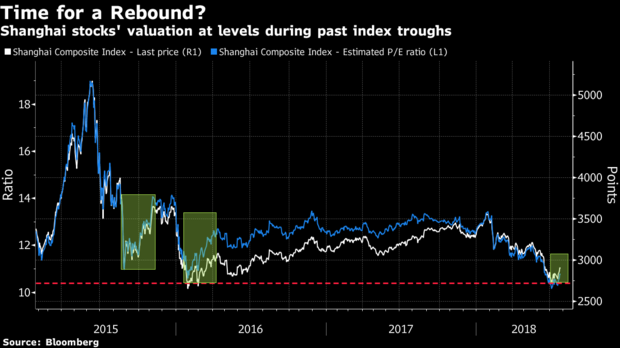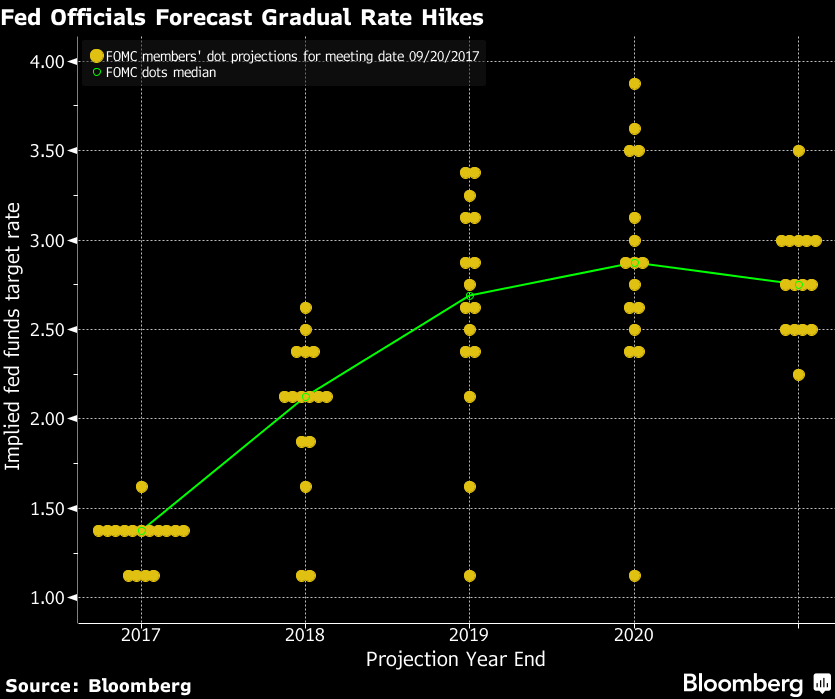Over the past few weeks, we’ve experienced the second- and third-largest U.S. bank failures as well as the collapse of the 167-year-old Credit Suisse Bank (CS). With three U.S. banks down, the Swiss government brokering the acquisition of CS by UBS in Europe, and a teetering First Republic Bank (FRC) of San Francisco, it has conjured up memories of the 2008 financial crisis. To think that these recent bank failures are isolated incidents, or “outlier events,” as our Federal Reserve Board Chair described them, misses the broader point: Banks exist based largely on trust and confidence, and the industry has been damaged by these recent failures.
The failure of Silicon Valley Bank (SIVB) has fueled fears of financial contagion risk. Are SIVB and the other bank failures truly isolated incidents or an ominous sign of more failures to come? To answer this question, let’s examine the key facts behind the sudden collapse of our nation’s 18th-largest bank.
Why did SIVB fail?
Homogeneous clientele: SIVB was nearly entirely exposed to the technology sector because it catered to the venture capital community in Silicon Valley. It attracted their capital by promising higher rates on savings accounts than its competitors. In recent years, this strategy worked well. SIVB had a huge inflow of large depositors from venture capital and private equity customers. The bank’s deposits nearly quadrupled from $49 billion in 2018 to $189.2 billion at the end of 2021.
Reckless interest rate risk: Back in March 2022, the average forecast of Fed policymakers was for rates to end 2022 below 2.00% as they thought inflation would prove to be “transitory.” Just over one year ago, the federal funds interest rate was 0.25% – 0.50%. After last week’s hike, it now stands at 4.75% – 5.00%. The Fed’s current hiking cycle is the largest percentage increase over the shortest amount of time in U.S. history. SIVB locked up about $100 billion of cash in longer-maturity mortgage-backed securities (MBS). Given the near-zero interest rate environment at the time, the bank locked in low yields that generated some interest income for the bank and its customers. This exposed the bank to huge risk once interest rates rose rapidly throughout 2022 due to the Fed’s super-aggressive rate hiking campaign to combat toxic inflation. Thus, the longer-term government bond assets that have always been funded with shorter term deposits lost value. Note: The value of a bond in relation to interest rates reacts like a seesaw — as one end rises, the other end falls, and vice versa. A prudent asset manager would have bought interest rate protection using derivatives known as swaptions or shortened bond duration.
The first Twitter-induced bank run: SIVB’s announcement that it would liquidate $20 billion of its investments in government securities to meet withdrawal requests sparked fear among its homogeneous client base of wealthy tech execs and venture capitalists. On March 8, some prominent figures in the venture capital industry encouraged SIVB depositors to pull their funds resulting in the first Twitter-induced “bank run.” By the close of business that day, $42 billion in deposits had left Silicon Valley Bank! As deposits fled, SIVB was forced to book what had only been paper losses on mortgage and treasury holdings (due to the Fed rate hikes noted above), realizing almost $1.9 billion in losses. By the close of business on March 9, SIVB had a negative cash balance of about $958 million and was insolvent. It was an embarrassing case of very basic asset liability mismanagement.
How did authorities respond?
A lack of clarity from regulators about whether depositors over the FDIC-insured limits would be bailed out created market stability issues. So, on Sunday evening, March 12, the Treasury, Fed, and FDIC together announced that they would be covering all depositors of both SIVB and Signature Bank. The FDIC stated: “All insured depositors will have full access to their insured deposits no later than Monday morning, March 13, 2023. The FDIC will pay uninsured depositors an advance dividend within the next week. Uninsured depositors will receive a receivership certificate for the remaining amount of their uninsured funds. As the FDIC sells the assets of Silicon Valley Bank, future dividend payments may be made to uninsured depositors.”
Of SIVB’s deposits, 93.5% (estimates vary by source) were over the FDIC limit, meaning they were uninsured and making them more prone to flight in times of trouble.
The Federal Reserve created the Bank Term Funding Program to provide emergency liquidity to U.S. depository institutions. In sharp contrast to 2008, when there was no way for Bear Stearns or Washington Mutual to borrow from our nation’s central bank, this new liquidity facility lets banks borrow against securities that have lost value and limits the risk of financial contagion by creating a backstop for banks that find themselves short on cash.
Were Silicon Valley Bank and Signature Bank bailed out?
Many consider the decision to fully reimburse depositors over the FDIC limit of $250,000 a “bailout” that sets a precedent and presents a moral hazard. However, this is an important distinction: The equity shareholders and bondholders were not bailed out with taxpayer dollars like the investment banks in 2008. The Dodd-Frank Act of 2012 strictly forbids bailouts with tax payer dollars. Our regulators contend that the depositors were made whole due to the need to contain financial contagion.
In an article written by Alexis Keenan of Yahoo Finance titled, “Inside the legal loophole U.S. regulators used to bail out SIVB depositors,” she writes: “The FDIC tapped a single exception to banking law known as the Systematic Risk Exemption (SRE), as a caveat in the 1991 Federal Deposit Insurance Corporation Improvement Act (FDICIA), a law that requires that the Federal Deposit Insurance Corporation (FDIC) impose the ’least cost‘ on taxpayers when it uses its Deposit Insurance Fund (DIF) to wind down failed banks. … However, the exception, invoked four times in response to the 2008 financial crisis, and pared down under the Dodd-Frank Act, can extend reimbursement to uninsured deposits when the U.S. Treasury Secretary decides that the additional FDIC assistance would lessen ’serious adverse effects‘ to economic conditions or financial stability, otherwise bound to happen under the ’least cost‘ response.”
Where were the regulators?
President Trump’s 2018 loosening of the Dodd-Frank Act’s bank regulations still subjected banks between $100 billion and $250 billion to periodic supervisory stress tests, which the Fed decided to conduct on a biannual basis.
According to a recent article by Roosevelt Institute fellow Todd Phillips titled, “How 2018 Regulatory Rollbacks Set the Stage for the Silicon Valley Bank Collapse, and How to Change Course,” he stated, “SIVB was not subject to the last supervisory stress test conducted in 2021. Subsequently, it should have been subject to supervisory stress testing in 2022, but it was not tested. Stress testing the bank would have required SIVB to fund itself with more regulatory capital.”
At the end of the day, SIVB’s collapse is a classic case of mismanagement on numerous fronts. And, how did regulators allow a bank to grow so quickly and not conduct a stress test?
Will First Republic Bank (FRC) of San Francisco make it?
“March 12 (Reuters) - U.S. private bank First Republic Bank (FRC) said on Sunday it had secured additional financing through JPMorgan Chase & Co (JPM), giving it access to a total of $70 billion in funds through various sources.”
First Republic has become the latest focal point of the rolling bank crisis. Like SIVB, FRC has a large number of uninsured depositors or ultra high net-worth individuals, making it susceptible to a run. However, unlike SIVB, it has about 64% of its deposits uninsured and has nothing near the unrealized losses SIVB had in its bond portfolio. FRC also holds about $100 million in high-quality mortgage loans, of which 64% are hybrid loans (fixed to floating rate). Analysts estimate that about $70 billion has been pulled from the bank since SIVB’s failure.
On March 16, 11 banks, following the lead of Jamie Dimon of JP Morgan, pledged $30 billion in deposits to be left on FRC’s balance sheet for the next four months. Dimon’s leadership is reminiscent of the Panic of 1907 when J. Pierpont Morgan brought together his fellow bankers to shore up banks that had seen a run on their deposits, helping stave off a financial crisis. Famed hedge fund manager Bill Ackman tweeted that the recycling of deposits was a fictional vote of confidence (paraphrased) and pressed for the government to back all FRC deposits temporarily. I respectfully disagree. You may recall when 14 banks banded together to wind down long-term capital management to prevent the spread of global financial contagion risk in 1998. I had just completed Merrill Lynch’s two-year professional development program. It worked then, and I believe a private solution led by Jamie Dimon will work now. Hopefully, an announcement will soon detail an private offering of convertible preferred shares or warrants to select investors. Warren Buffett structured such deals with Bank of America and Goldman Sachs during the 2008 GFC. It will boost the market’s confidence if he’s involved in a private offering of FRC securities. Either way, FRC will emerge as a much smaller bank, perhaps about $50 billion in size, as its current share price reflects. The sooner we have clarity on a restructuring deal, the better, as it will bring closure to the latest banking debacle.
Are my accounts at Schwab (SCHW) safe?
Recent headlines have overblown concerns regarding Schwab’s held to maturity bond portfolio and cash sorting woes. Schwab does not have a liquidity problem, but it does face some short-term headwinds.
Cash sorting explained: Charles Schwab, and other bank/brokerages, sweeps customers uninvested cash into low-yielding accounts, which generate high profits for Schwab known as net interest margin (the difference between the interest earned on the company’s bond portfolio and the payout to customers sweep accounts). With short-term interest rates approaching 5%, Schwab is experiencing outflows from it lower yielding accounts to higher paying options, such as CD’s, Treasury bills, and their money markets. Money markets charge a management fee, but it’s not nearly as profitable as the sweep accounts.
According to a WSJ article titled, “As Interest Rates Rose, Banks Did a Balance-Sheet Switcheroo,” published on March 29, 2023, the authors state: “The Wall Street Journal identified six large U.S. banks, including Charles Schwab Corp. and PNC Financial Services Group Inc., that together switched the classifications on more than $500 billion of their bond investments last year. For some banks, excluding the unrealized losses from their balance sheets, allowed them to report robust levels of capital when in reality their assets were worth much less. … The biggest such reclassification was by Charles Schwab, which is structured as a savings and loan holding company and regulated by the Fed. It transferred $188.6 billion of securities to the held-to-maturity category from available-for-sale. Schwab wasn’t labeling any of its bonds as held-to-maturity at the end of 2021.”
Schwab is a very different financial firm from SIVB and FRC for the following reasons:
SIVB had a homogeneous segment of the deposit market, namely venture capital and private equity companies. In contrast, Schwab is more diversified across different customer segments.
SCHW is the nation’s second-largest brokerage with $6.6 trillion under management. Schwab is insured by Securities Investor Protection Corporation (SIPC) up to $500,000 per account, higher than the $250,000 for the FDIC and banks.
Key insiders recently bought the stock in a statement of confidence, and Citi upped its rating on the bank's stock to "Buy" from "Hold.” The stock is down about 37% year-to-date.
Some 80% of deposits are FDIC-insured, compared to 93% of SIVB's deposit NOT being FDIC-insured
This past week alone, there was an influx of over $16 billion. I encourage you to read the statement from founder and co-chairman Charles Schwab and CEO Walt Bettinger, issued on Monday, March 13, here.
The Bottom line:
Is this the beginning of another financial crisis like 2008? I do NOT believe so. Our banking system is resilient and well-capitalized. Unlike the financial crisis of 2008, when banks owned subprime mortgage loans and toxic leveraged collateralized loan obligations, today’s banks — thanks in part to the Dodd-Frank Act of 2012 — own the highest quality government bonds on their balance sheets and capital buffers are much larger.
What happened to the collapsed banks’ assets? On March 20, New York Community Bancorp, Inc. (NYCB) bought Signature Bank’s assets, and Signature’s stock rallied over 34%. On March 27, First Citizens Bancshares entered into an agreement with the FDIC to take over Silicon Valley Bank. SIVB’s stock surged 54% — capitalism at work.
Is the worst of this recent banking crisis over? I think we have reached peak panic levels, and the worst of the banking crisis is over. This is a situation where a few outlier banks in California had some problems due to mismanagement, and it will take time to repair the damage to consumer confidence. It is not a 2008 GFC redux. However, there’s a chance we will face a deleveraging cycle more like the S & L crisis of the 80’s. Jim Costello, chief economist at data firm MSCI Real Assets, stated in a recent edition of Wealth Management Magazine: “I have seen though work that was done by a colleague at Columbia that came up with an estimate that close to 200 banks may be failing due to the same issues that took down Silicon Valley Bank. You might have an asset/liability issue there and some of them may not make it. But 200 banks across the scope of things is not the same as what we’ve seen in the middle of the Great Financial Crisis.” From 2008 - 2012, the FDIC closed 465 failed banks. How many do you remember? I can only think of the two listed in the above graphic and the Wall Street investment bank bailouts. Higher interest rates and a looming recession always threaten bank loan portfolios and expose weaknesses.
FDIC insurance level is $250,000: A married couple with an LLC, C, or S-corp can maintain up to $750,000 in three separate accounts. Make sure you do not have any uninsured deposits. Banks know their customers; you should know your bank’s balance sheet, especially if your business needs to maintain uninsured cash levels.
The Fed is already considering tougher rules for mid-size banks like SIVB. We've learned that mid-size banks below 250 billion (Systemically Important Banks (SIBs) size) can seriously rock the banking system. But new regulations that bank examiners do not enforce cannot protect depositors from mismanagement. It’s also time for bank accounting rules to be revised. Banks have taken advantage of lax accounting rules to goose profits. The value of a bond doesn't change despite management's "balance-sheet switcheroos."
I think we’ll look back on the banking turmoil of the past few weeks and say, “Ok, that was a bit surreal and scary,” and the economy as a whole might move on quickly. However, despite the Federal Reserve’s backstop of banks, the economic brakes for the economy have been triggered and we could be in for a bumpy ride.
*Note: Cambridge Wealth Management’s portfolio positioning is very defensive, and did not have exposure to regional banks prior to March 2023. However, CWM might have had inconsequential positions held indirectly through the underlying portfolios of the registered investment companies in certain product offerings. Updates to portfolio strategy will be discussed in the private client quarterly performance report.
IMPORTANT DISCLOSURES: This information is educational in nature and is not intended to provide specific investment advice, a financial promotion, or an inducement ,or incitement to participate in any product, offering, or investment. Cambridge Wealth Management is not adopting, making a recommendation for, or endorsing any investment strategy or particular security. The opinions and information expressed herein are obtained from sources believed to be reliable. However, their accuracy and completeness cannot be guaranteed. All data is driven from publicly available information and has not been independently verified by Cambridge Wealth Management, LLC. Some of the conclusions in this report are intended to be generalizations. Any economic forecasts and statements set forth may not develop as predicted and are subject to change. Undue reliance should not be placed on such statements because, by their nature, they are subject to known and unknown risks and uncertainties. There is no assurance that the views or strategies discussed are suitable for all investors or will yield positive outcomes. Investing involves risks including the risk of possible loss. Past performance is not a guarantee of future results.














































